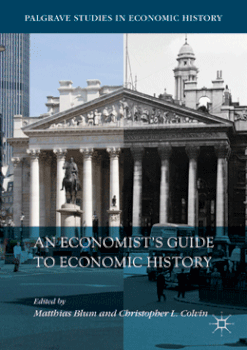|
We have just received the fully typeset and copy-edited version of the book back from the publishers. It is looking good! Some small problems to solve, including loads of missing references and a few eclectic spelling varieties that have somehow escaped the attention of the proofreaders. (I fear that I will never fully understand our American cousins' penchant for the letter z - that's "zee", not "zed".)
One disappointment, however, has been the quality of the typeset figures. They all look like they were pasted straight from Excel. Because, well, they were! I had hoped for a little more... So my friend Adi McCrea has agreed to help us out at very short notice. Adi is a data scientist and Tableau whiz. She has already sent me some prototypes. These new-and-improved figures will look great! (For a discussion of why good data visualisation should be considered much more important to economists than it usually is, see this interview with Jonathan Schwabish, who wrote a great visualisation guide for the JEP back in 2014.) Other stuff we are adding to the book at this stage include a series of cartoons by Ashleigh Neill, and a set of haiku by Stephen Ziliak. Both these projects were inspired by the contents of the book. Along with Adi's data visualisation magic, we hope that you will agree that the inclusion of this material will elevate the finished product to a piece of high art! Chris.
0 Comments
I spent much of July in Picardy, in northern France. Just down the road from us was a First World War War cemetery for members of the Chinese Labour Corps. The cemetery has a fascinating history, and my visit got me thinking about the economics behind this history.
The non-combatants buried in the cimetière chinois were part of a group that migrated to Europe from northern China on the promise of employment by the British Army. The migrant workers arrived from April 1917, and numbered 96,000 at their peak. Most of the 838 men interned in the cemetery died after the war had ended, succumbing to the Spanish Flu. These migrants experienced considerable hardships. It is not unfair to say that the British and French governments took their sweet time to decide what to do with members of the Chinese Labour Corps. Some did return to China. Others were permitted to move to Paris and other big cities. But many were "warehoused" in camps in the Somme Valley, for years. They were only permitted to leave these camps for short visits to the surrounding villages, and only under the supervision of army minders. An Economist's Guide to Economic History contains lots of material that can be combined to better understand the history of this cemetery from an economic perspective. Relevant chapters include one on migration (chapter 10, by Braun), another on disease (chapter 16, by Alfani and Ó Gráda), and another on the world wars (chapter 30, by Eloranta). I look forward to re-reading these chapters later this month, once they have been typeset by Palgrave Macmillan. I decided to have a go at making a little vlog in which I introduce the cemetery. Making videos is hard work! Glenn Colvin (my dad) did the filming and editing. The copyright to the historical images of the Chinese Labour Corps is held by the Imperial War Museum (images Q2696, Q3917 and Q8518). I hope you enjoy my first attempt at video communication! Lessons learnt: wear a different shirt (to avoid the moiré effect), speak faster and in a more consistent pattern, and walk more normally! Chris. |
AuthorChris Colvin is an economic historian based at Queen’s University Belfast, UK. Archives
March 2022
Categories |
Matthias Blum and Christopher L. Colvin (Eds.), An Economist's Guide to Economic History,
Cham: Palgrave Macmillan (2018). DOI: 10.1007/978-3-319-96568-0. ISBN: 978-3-319-96567-3.
© 2018-2022 Blum and Colvin.
Cham: Palgrave Macmillan (2018). DOI: 10.1007/978-3-319-96568-0. ISBN: 978-3-319-96567-3.
© 2018-2022 Blum and Colvin.

 RSS Feed
RSS Feed